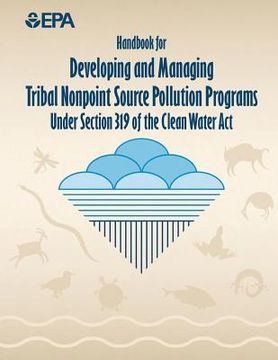Handbook for Developing and Managing Tribal Nonpoint Source Pollution Programs Under Section 319 of the Clean Water Act
Synopsis "Handbook for Developing and Managing Tribal Nonpoint Source Pollution Programs Under Section 319 of the Clean Water Act"
There is a deep spiritual connection between Native American people and the earth. Tribal communities are strongly committed to the restoration and protection of the natural environment, including surface and ground water resources. These rivers, lakes, streams, reservoirs, wetlands, estuaries, and coastal waters sustain fish and shellfish, provide recreational opportunities, supply drinking water, and allow ceremonial uses for many tribal communities. However, many water resources are threatened or impaired by polluted runoff, also known as nonpoint source (NPS) pollution. The goal of this handbook is to provide tribes with guidance and other information that will help them to protect and restore water resources. Congress amended the Clean Water Act (CWA) in 1987 to establish the section 319 Nonpoint Source Management Program in recognition of the need for greater federal leadership to help focus state, tribal, and local nonpoint source efforts. Under section 319, states, territories, and Indian tribes receive grant money that supports a wide variety of activities including technical assistance, financial assistance, education, training, technology transfer, demonstration projects, and monitoring to assess the success of implementing management practices that address pollution from nonpoint sources. As of the time of publication of this document, 159 tribes have approved nonpoint source programs. Tribal water quality programs continue to increase in number and to mature in their capacity to understand and improve the condition of reservation lakes, rivers, streams, wetlands, and coastal waters. In support of the continued growth and sophistication of tribal participation in the CWA section 319 program, the U.S. Environmental Protection Agency (EPA) is pleased to release this "Handbook for Developing and Managing Tribal Nonpoint Source Pollution Programs Under Section 319 of the Clean Water Act." EPA is committed to restoring and protecting our waters through a watershed approach, and it is encouraging to see a number of tribes electing to pursue funding to develop watershed-based plans. Cooperative, on-the-ground, watershed-based efforts among tribal and nontribal water resource managers and staff are helping to improve the prospects for solving water quality problems that know no boundaries, and affect the health and quality of life of all Americans. This handbook is meant to be a practical and accessible guide for tribes to answer key questions such as: How do I develop a nonpoint source assessment report and management program that meet 319 program eligibility requirements and set the stage for effective program implementation? What sorts of activities are eligible for funding under CWA section 319? How do I develop and successfully implement a watershed project that will help restore the quality of our water for drinking, fishing, and other uses? The handbook explains the role of both EPA and the tribes in working together to help solve water quality problems caused by nonpoint source pollution. All aspects of the grants-funding process are broken down for you in simple steps, showing you how tribes can use section 319 program funds to implement programs and projects to reduce pollution and restore water quality. At the same time, it takes you the next level by providing a great deal of useful technical information regarding nonpoint source pollution, how you can develop and assess available data to develop a plan of action, and what management practices and activities are needed to solve the problem.

